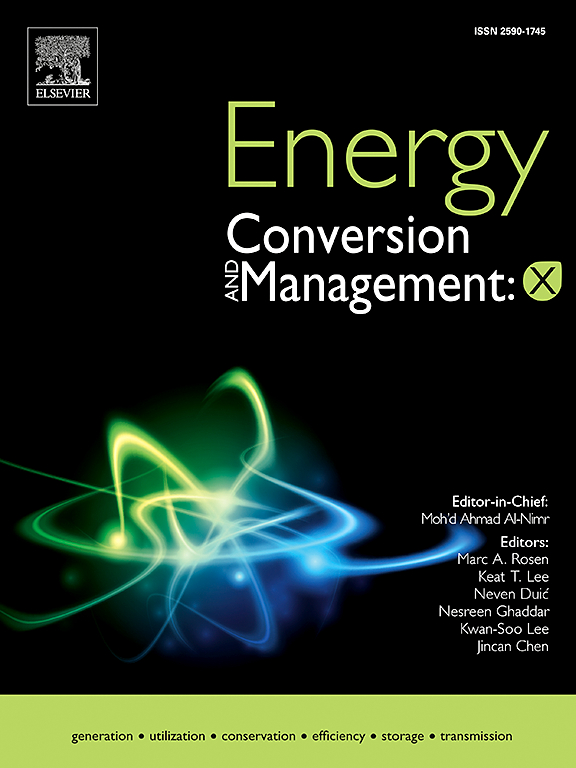Sustainable electrification of remote communities: Techno-economic and demand response analysis for renewable microgrids
IF 7.1
Q1 ENERGY & FUELS
引用次数: 0
Abstract
Bangladesh has an acute power deficit, its rural areas consequently calling for creative renewable-energy solutions. A remote riverside-border village in the district of Rajshahi, off-grid due to its geography across the Padma River, boasts 2,500 inhabitants with 850 households, a primary school among them. It is to be powered from abundant renewables by means of an off-grid microgrid integrating solar photovoltaic (PV) and wind turbine (WT) generation with a battery energy storage system (BESS), designed in HOMER Pro (version 3.14.2). Optimum systems, including PV, WT, and BESS, attain an NPC of $171,720, a COE of $0.0688/kWh, an operating cost of $2,658.03, and a capital cost of $136,082 among three configurations analyzed. The system ensures zero carbon emission with a 100% Renewable Fraction (RF), indicating environmental benefits. Sensitivity analysis of factors like solar irradiance, wind speed, and component costs revealed economic variability, while diverse load dispatch strategies enhanced efficiency. Using MATLAB simulation, demand response analysis showed annual energy savings of 9,686.427 kWh/year. Moreover, future energy demand projections and system scalability analysis demonstrate the adaptability of the microgrid to population growth, ensuring long-term sustainability and cost-effectiveness. This study offers a scalable model for sustainable rural electrification in remote regions globally, promoting environmental sustainability and energy access in isolated communities.
求助全文
约1分钟内获得全文
求助全文
来源期刊

Energy Conversion and Management-X
Multiple-
CiteScore
8.80
自引率
3.20%
发文量
180
审稿时长
58 days
期刊介绍:
Energy Conversion and Management: X is the open access extension of the reputable journal Energy Conversion and Management, serving as a platform for interdisciplinary research on a wide array of critical energy subjects. The journal is dedicated to publishing original contributions and in-depth technical review articles that present groundbreaking research on topics spanning energy generation, utilization, conversion, storage, transmission, conservation, management, and sustainability.
The scope of Energy Conversion and Management: X encompasses various forms of energy, including mechanical, thermal, nuclear, chemical, electromagnetic, magnetic, and electric energy. It addresses all known energy resources, highlighting both conventional sources like fossil fuels and nuclear power, as well as renewable resources such as solar, biomass, hydro, wind, geothermal, and ocean energy.
 求助内容:
求助内容: 应助结果提醒方式:
应助结果提醒方式:


